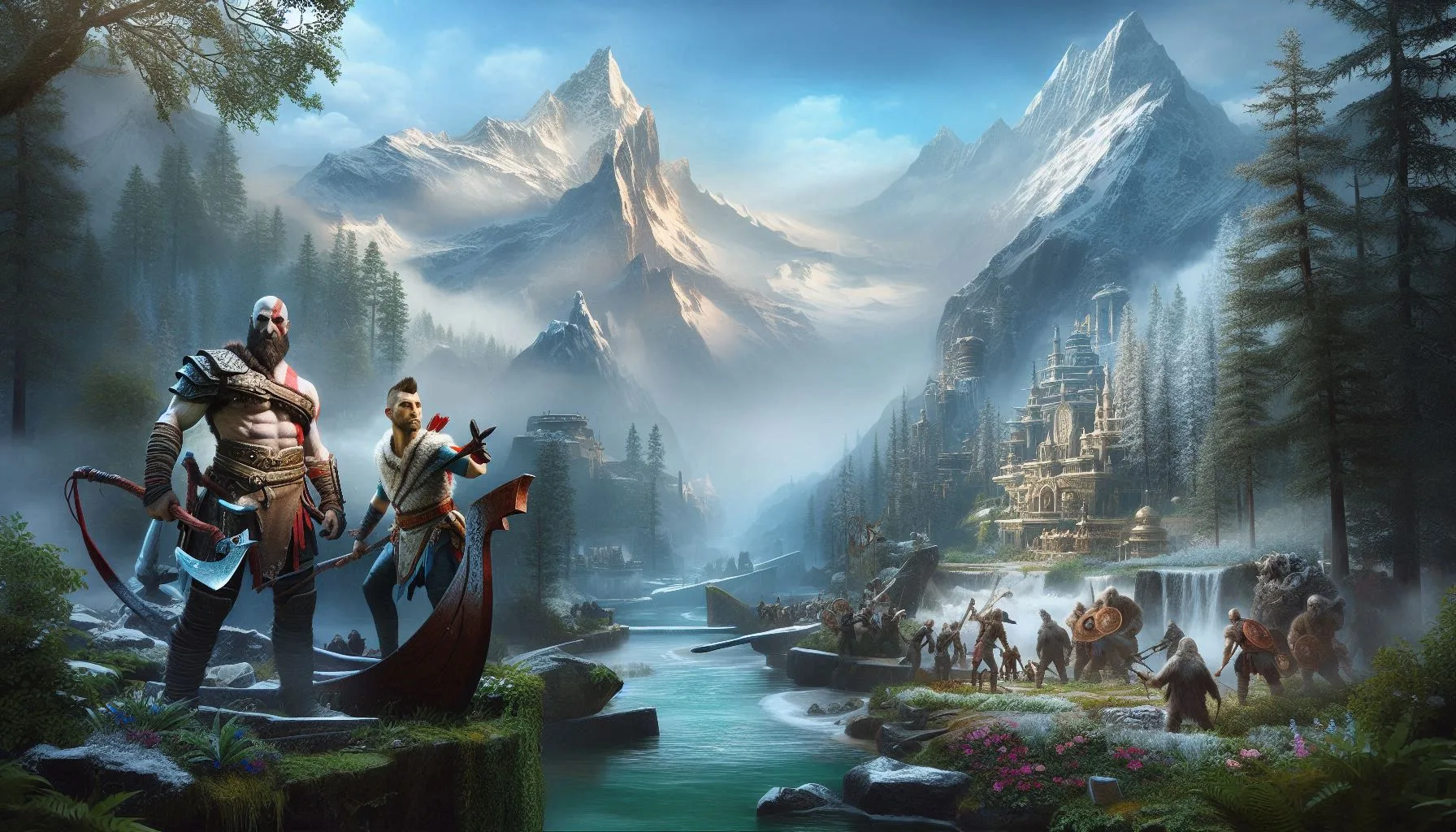The Art and Design of God of War Ragnarök: Creating a Mythical World
Introduction
“God of War Ragnarök” is more than just a game; it’s a masterful work of art that immerses players in a mythical world steeped in Norse mythology. From the rugged landscapes to the meticulously designed characters, every element of the game reflects a deep commitment to creating a visually stunning and emotionally resonant experience. In this blog, we will explore the art and design of “God of War Ragnarök,” delving into the creative processes and inspirations that brought this mythical world to life.
1. The Visual Language of Norse Mythology
The visual design of “God of War Ragnarök” is heavily inspired by Norse mythology, which serves as the foundation for the game’s world. The developers took great care in researching and interpreting ancient Norse symbols, architecture, and artifacts, incorporating these elements into the game’s environments and character designs. The result is a world that feels both authentic and fantastical, where every detail contributes to the overall narrative and atmosphere.
2. Crafting the Nine Realms: A Journey Through Mythical Landscapes
One of the most impressive aspects of “God of War Ragnarök” is the diversity and richness of its environments. The game takes players on a journey through the Nine Realms, each uniquely designed to reflect its own distinct atmosphere and mythology. From the fiery plains of Muspelheim to the icy expanses of Niflheim, the environments are not only visually striking but also integral to the story. The attention to detail in the landscapes, from the textures of the ground to the light filtering through the trees, creates a sense of place that is both immersive and awe-inspiring.
3. Character Design: Bringing Legends to Life
The characters in “God of War Ragnarök” are a testament to the game’s exceptional design work. Kratos, with his iconic tattoos and weathered armor, embodies the strength and resilience of a warrior who has faced countless battles. Atreus, on the other hand, is designed to reflect both his youth and his growing maturity throughout the game. The character designs are not just about aesthetics; they also convey the personalities, histories, and roles of the characters in the story. The developers used advanced motion capture and animation techniques to ensure that the characters’ movements and expressions are lifelike and emotionally resonant.
4. The Role of Runes and Symbolism in Design
Runes and symbols play a significant role in the art and design of “God of War Ragnarök.” These ancient symbols are not just decorative; they are imbued with meaning and are often used to solve puzzles or unlock hidden secrets within the game. The design team carefully integrated runes into the architecture, weapons, and even the clothing of characters, creating a cohesive visual language that enhances the mythological setting. The use of runes and symbols adds depth to the game’s world, inviting players to explore and uncover the mysteries hidden within.
5. Sound and Music: Enhancing the Mythical Atmosphere
While the visual design of “God of War Ragnarök” is breathtaking, the game’s sound design and music are equally important in creating an immersive experience. The game’s soundtrack, composed by Bear McCreary, blends traditional Norse instruments with orchestral music, creating a powerful and evocative score that enhances the epic scale of the story. The sound design, from the crunch of snow underfoot to the roar of distant monsters, adds to the realism and intensity of the game’s world. Together, the sound and music work in harmony with the visual design to transport players into the heart of Norse mythology.
6. The Challenges of Designing a Mythical World
Creating a game as visually complex as “God of War Ragnarök” comes with its challenges. The design team had to balance the need for historical accuracy with the demands of a modern gaming experience. This meant carefully choosing which elements of Norse mythology to include and how to interpret them in a way that would resonate with players. The designers also had to ensure that the game’s environments and characters were not only visually impressive but also functional within the gameplay. This required a deep understanding of game mechanics and a collaborative approach between artists, designers, and developers.
7. The Evolution of Design from Previous Games
“God of War Ragnarök” builds on the design principles established in previous games in the series but takes them to new heights. The evolution of the game’s art and design reflects both advances in technology and a deeper exploration of Norse mythology. The character of Kratos, for example, has undergone significant changes, both in appearance and in his role within the story. The design of the Nine Realms has also evolved, with more detailed environments and more dynamic interactions with the world. This evolution is a testament to the creativity and innovation of the game’s design team.
8. The Impact of Art on Storytelling
In “God of War Ragnarök,” art is not just a backdrop to the action; it is a crucial part of the storytelling process. The visual design of the game helps to convey the themes of the story, from the harsh realities of war to the deep connections between characters. The environments, characters, and symbols all contribute to the narrative, creating a world that feels alive and meaningful. This integration of art and storytelling is one of the reasons why “God of War Ragnarök” has been so successful in capturing the imagination of players around the world.
Conclusion
The art and design of “God of War Ragnarök” are key elements that make the game a truly unforgettable experience. From the meticulously crafted characters to the breathtaking environments, every aspect of the game’s design reflects a deep commitment to creating a mythical world that is both immersive and emotionally resonant. As players journey through the Nine Realms, they are not only witnessing an epic story but also experiencing a work of art that has been brought to life with incredible skill and creativity.

